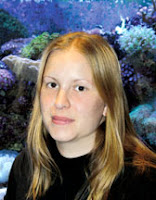Hello, Frank Indiviglio here. The world’s oceans harbor a great many creatures that produce medically valuable compounds. Sessile marine invertebrates (those which do not move, but rather remain fixed in one location) seem to be particularly valuable in this regard. In fact, sponges, sea whips, sea squirts and similar animals are the source of most of the invertebrate-derived medicines in use today.
A review of the pharmaceutically active compounds isolated from sessile marine organisms shows that, while the animals themselves are quite different from one another, their shared lifestyle has fostered similar adaptations – the evolution of powerful chemical secretions.
Protection for Immobile Animals
 Animals which cannot flee from predators must devise alternate means of protection…an arsenal of protective chemicals, for example. Also, the feeding mode utilized by many sponges and other sessile organisms – filtering seawater – brings not only food but also harmful pathogens and parasites into their bodies. These are attacked with potent antimicrobial compounds.
Animals which cannot flee from predators must devise alternate means of protection…an arsenal of protective chemicals, for example. Also, the feeding mode utilized by many sponges and other sessile organisms – filtering seawater – brings not only food but also harmful pathogens and parasites into their bodies. These are attacked with potent antimicrobial compounds.
A suitable anchorage (attachment) site is vital to the survival of an invertebrate which is unable to move about. Competition for such sites can be keen, yet immobile animals are again faced with the dilemma of being unable to physically exclude other animals. Many have, therefore, evolved secretions that kill other animals. The composition and function of these various chemicals often lends them medicinal value as well.
Medically Important Marine Invertebrates
Sponges, the best studied of the marine invertebrates, and have given us Topsentin, an anti-inflammatory, and Lasonolide, which fights tumors by binding with their DNA.
Brightly colored sea whips have yielded Pseudoterosin, which reduces swelling and accelerates wound healing. Also known as gorgonians, several species of these soft corals do well in marine aquariums.
Tunicates, or sea squirts, evolved a primitive backbone, known as a notochord, over 540 million years ago, and are thus the earliest ancestors of modern day vertebrates. These sac-like filter feeders produce Ecteinascidin, a compound which blocks DNA transcription. It is believed that Ecteinascidin may someday find use in treating breast cancer.
 Bryostatin, isolated from colonial marine invertebrates known as bryozoans, or moss animals, forces cancer cells to mature, thereby halting their ability to divide.
Bryostatin, isolated from colonial marine invertebrates known as bryozoans, or moss animals, forces cancer cells to mature, thereby halting their ability to divide.
A number of mobile marine invertebrates also produce chemicals that are of interest to medical researchers. Cone snails, for example, secrete virulent toxins that have yielded the powerful pain killer Ziconotide. This calcium channel blocker inhibits the relay of neurotransmitters and is used to treat people living with severe chronic pain.
Opportunities for Aquarists and Researchers
So, please don’t ignore the small, immobile creatures in your aquarium and the world’s oceans. Your observations of their behavior can lead to unexpected and medically important discoveries. For those of you interested in serious medical research, the world’s marine invertebrates offer unlimited possibilities, and the field is wide open.
Further Reading
The Harbor Branch Oceanographic Institution has posted an overview of some of the exciting work being done with medically useful marine invertebrates at http://www.informaworld.com/smpp/content~content=a713743150~db=all.
Please write in with your questions and comments. Thanks, until next time, Frank Indiviglio.
 That Fish Blog – Aquarium Advice and Information
That Fish Blog – Aquarium Advice and Information



